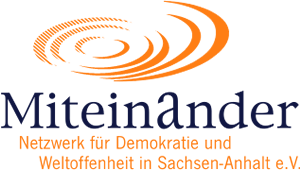Die Montagsdemos sind das Protest-Symbol in Ostdeutschland und dementsprechend politisch umkämpft. Vor dem Hintergrund der aktuellen Krise rufen auch jetzt wieder diverse Akteur*innen verschiedener politischer Couleur zu Demonstrationen auf und nehmen das Format der Montagsdemos für ihre Zwecke in Anspruch.
Die Montagsdemos entstanden ab 1981/1982 aus den Friedensgebeten der unabhängigen Friedensbewegung unter dem Dach der Kirchen. Die Friedensgebete thematisierten immer wieder auch die Menschenrechtssituation in der DDR. Sie waren Sammelpunkte der Opposition und jener, die die Ausreise aus der DDR beantragt hatten. Am 4. September 1989 fand in Leipzig dann die erste Montagsdemo auf dem Hof der Nicolaikirche statt. Die Forderungen zielten auf gesellschaftliche Veränderungen. In den Wochen danach hatten die Demonstrationen trotz Repression und Gegenpropaganda der SED immer mehr Zulauf. Nach dem Mauerfall im November 1989 änderte sich die Tonlage der Montagsdemos. Im Vordergrund stand nun der Wunsch nach der Wiedervereinigung: Nationalistische Töne waren zu hören. Erstmals traten auch Neonazis offen auf.
In den Transformationsjahren der Nachwendezeit gab es in Ostdeutschland zahlreiche regionale Proteste gegen die Schließung und Abwicklung von Betrieben, die sich in die Tradition der Montagsdemos stellten und für soziale Rechte eintraten. Auch danach orientierten sich politische Akteur*innen an diesem Protestformat. So rief im August 2004 Andreas Ehrhold aus Magdeburg per Handzettel zum Protest gegen Hartz IV. In den nachfolgenden elf Wochen kamen beständig mehr Menschen. Auch an diesen Montagsdemos nahmen Neonazis teil. Die Organisator*innen grenzten sich von ihnen ab, konnten ihre fortgesetzte Teilnahme jedoch nicht verhindern. Ab 2015 wurde das Format der Montagsdemos von PEGIDA okkupiert, die sich in die Tradition der 1989er Demokratie-Bewegung stellte, was auf heftigen Widerspruch stieß. Gleiches wiederholte sich ab 2020 als Querdenken sich ebenfalls auf diese Tradition berief und sich als Verfolgte einer Diktatur inszenierte.
Die Bezugnahme unterschiedlicher politischer Akteur*innen in Ostdeutschland auf die Montagsdemos der DDR war und ist politisch umstritten. Ein Teil der ehemaligen Bürgerrechtler*innen sprach vom Missbrauch der Tradition, andere unterstützen die sozialen Proteste, grenzten sich aber von rechtsextremen Vereinnahmungen ab. Gerade weil im letzten Jahrzehnt sich vor allem Akteur*innen der extremen Rechten mit ihren Protesten und Aufmärschen in die Tradition der Montagsdemos stellten, bleibt daran zu erinnern: Die Montagsdemos 1989, in der Endzeit der DDR, standen für die Verteidigung der Menschenrechte, einen demokratischen Aufbruch und soziale Gerechtigkeit.
